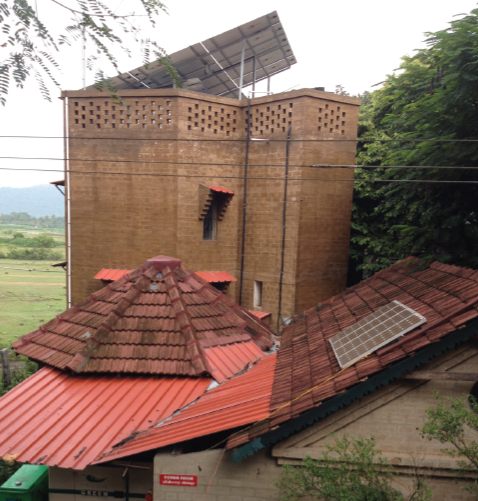Context
For communities living in remote areas, while accessing basic healthcare itself can be very challenging, availability secondary care is often lacking. For any basic surgeries or specialized treatments, people would need to travel to far away towns, often walking for long distances in the absence of motorable roads.
This is the context of the remote, forested Sittilingi valley in Dharmapuri district of Tamil Nadu, inhabited primarily by around fifty thousand “Malavasis” or “Hill People”. Here, the Tribal Health Initiative was started in 1992 by Dr. Regi George and Dr. Lalitha Regi to improve the lives of the tribal communities living in the Sittilingi valley and surrounding hills through a variety of programmes in health care and community health that will lead to better quality of life. What started as a small out-patient unit in a thatched hut is now a full-fledged 45 bedded secondary care hospital which sees more than 30,000 patients and does about 600 surgeries a year. The Base Hospital has two wards, a labour room, operation theatre and an ICU unit with ventilator beds. 24×7 running labour room is available with an attached neonatal ICU.
Technological Solution
Primary solar system with maximum load capacity of 2500 watts and maximum 18 units per day has been installed. The system consists of a 6 kWp solar array, along with 200 Ah, 120 V battery bank & 10 kVA, 120 V Solar Inverter. During the operation time of the OT which runs twice a week, the solar system supports the loads like suction machine, anesthesia machine, patient monitor, shadow-less light, cautery, ventilator, air-conditioning machine and luminaries. On the day before the OT day, the same system powers an industrial grade autoclave to sterilize all the equipment required for the OT. In other times the system powers any load as required during emergencies. In this manner, the system is fully optimized to meet all the different functions of the OT. If one were to design for the OT and the autoclave loads simultaneously, the size and cost of the solution would be much higher.

Financial impact
Expenses on diesel have gone down significantly, as earlier they would have to purchase diesel once in every two weeks. The DG set is no longer used, except in the case of emergencies. THI is paying back part of the system cost over a period of three years, through the saving of INR 15,000 per month on diesel expenses. This can be a very replicable financial model for other hospitals in such contexts to produce their own energy and own the systems over time.
Need
Being located in a remote location, the major issue the hospital faced was erratic power supply and low quality of power. Frequent voltage fluctuations and low voltage supply affected the functioning and the durability of sensitive medical equipment, especially in the operation theatre. Therefore, it was essential to run the Diesel Generator (DG) set for the entire day which costed THI on an average 15,000 INR/month as diesel expenses, and even more during summer when the power outages are more. Moreover, a dedicated person had to monitor the DG set during the surgeries making sure it runs continuously. Apart from being a highly polluting source of electricity, the noise from the continuous running of the DG set was not conducive for the peaceful hospital atmosphere.
Partners
Tribal Health Initiative & SELCO Solar Light Pvt. Ltd.
Impact
The biggest impact has been the assurance of smooth and reliability in the running of the Operational Theatre - increasing the confidence of the patients as well as the hospital staff.
There had been instances when diesel would run out in the middle of the procedure and they would sometimes take 6-7 hours to get the diesel and refill (they need to travel to Salem to purchase diesel which is 80 kilometres away in a hilly terrain) and patients, doctors and relatives would have to wait. The operation theatre now provides uninterrupted service delivery.
In an already resource constrained area, the process of procuring the diesel and operating the DG set would need to constantly engage one person, who now can be engaged for other purposes.
Based on these impacts, THI is also considering solar powering their labour ward and the baby care unit. Energy efficient baby warmers and phototherapy units are being identified prior to designing the energy solution.
